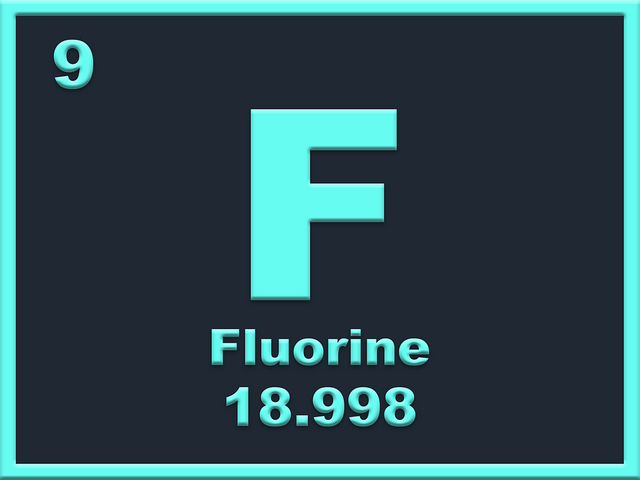In 1886, French chemist Henri Moissan made the discovery of fluorine. Due to its extremely reactive character, it was given the Latin term fluere, which means "to flow". Minerals like fluorite, cryolite, and topaz are examples of those that contain fluorine in nature. The crust of the planet and ocean are two more common places to find it.
There are numerous industrial and commercial uses for fluorine. It is employed in the creation of Teflon, the production of other fluorine-containing compounds, the production of uranium, the refinement of petroleum, and the creation of Teflon. Additionally, it is utilized in water fluoridation and toothpaste to combat tooth decay.
Fluorine is highly reactive and has a variety of special qualities. Noble gases and practically all other elements can react with it and it can create compounds with them. It can even react with glass, making it difficult to work with in a scientific environment.
Fluorine is particularly dangerous when it's gaseous, thus it must always be handled carefully. Inhaling it is extremely poisonous and can result in severe burns. However, fluorine and its compounds can be highly helpful in a wide range of applications when treated carefully.
Uses of Fluorine:
Production of uranium:
Uranium is produced by extracting and purifying fluorine, which is then utilized as fuel in nuclear reactors.
Petroleum refining:
Fluorine is used to clean out impurities and enhance the quality of the finished product during the refining of petroleum.
Production of Teflon:
Teflon is a synthetic polymer used, among other things, in non-stick coatings for cookware. A crucial ingredient in the creation of Teflon is fluorine.
Production of refrigerants:
Compounds containing fluorine are utilized as refrigerants in refrigeration and air conditioning systems.
Fluoridation of water:
To avoid tooth decay, fluorine is dilutedly added to drinking water.
Manufacturing fluorine-containing substances:
Fluorine is used to make a variety of chemicals, including solvents, medicines, and polymers.
Glass etching:
Fluorine can be used to etch glass to produce intricate patterns and decorations.
Lithium-ion batteries:
Some varieties of lithium-ion batteries use fluorine-containing compounds as their electrolytes to increase their effectiveness and performance.
Aircraft industry:
Fluorine-containing compounds are utilized to make lightweight, very durable materials for aerospace applications as well as rocket fuel.
Fluorine is a fascinating element with special qualities and a variety of uses in business and daily life, in conclusion. Although it can be a difficult substance to work with due to its reactivity and toxicity, when used carefully, it can be a potent force for advancement.

Thank you, friend!


I'm @steem.history, who is steem witness.
Thank you for witnessvoting for me.
please click it!
(Go to https://steemit.com/~witnesses and type fbslo at the bottom of the page)
The weight is reduced because of the lack of Voting Power. If you vote for me as a witness, you can get my little vote.
Downvoting a post can decrease pending rewards and make it less visible. Common reasons:
Submit
We would like to thank you for publishing your article in the Hind Whale Community community today. Based on our review of your article, we have come to the following conclusion:
Regards,
@pea07(Moderator)
Hind Whale Community
Downvoting a post can decrease pending rewards and make it less visible. Common reasons:
Submit
@rey01v
Thank you for sharing this informative article on fluorine, a highly reactive and electronegative element with unique properties and several industrial and commercial uses. It's interesting to learn about the history of its discovery and the various applications, from the production of Teflon and uranium to water fluoridation and glass etching. It's essential to note the importance of careful handling of fluorine due to its poisonous nature, but its benefits in numerous fields make it a valuable resource for progress and innovation. Great job!
Downvoting a post can decrease pending rewards and make it less visible. Common reasons:
Submit